How is e-commerce developing now?
Global online sales will grow 8.8% this year to $6.3 trillion (data from EMARKETER, formerly Insider Intelligence).
20.1% of retail purchases will be made online, which will negatively affect offline businesses. But at the same time, it will give them the opportunity to reach a new level – to expand the range of offers, increase coverage and become open to users 24/7.
For a full-fledged online business, despite the growth of global sales to 23% by 2027, the situation will be difficult. E-commerce is booming, competition is growing. Entrepreneurs have to look for additional points of contact with the user and creative ideas to retain attention.
This is especially true for e-commerce in Russia. According to Data Insight estimatesif in 2023 online sales increased by 48%, then by the end of 2024 they will grow by only 36%, and in 2026 – by 18%.
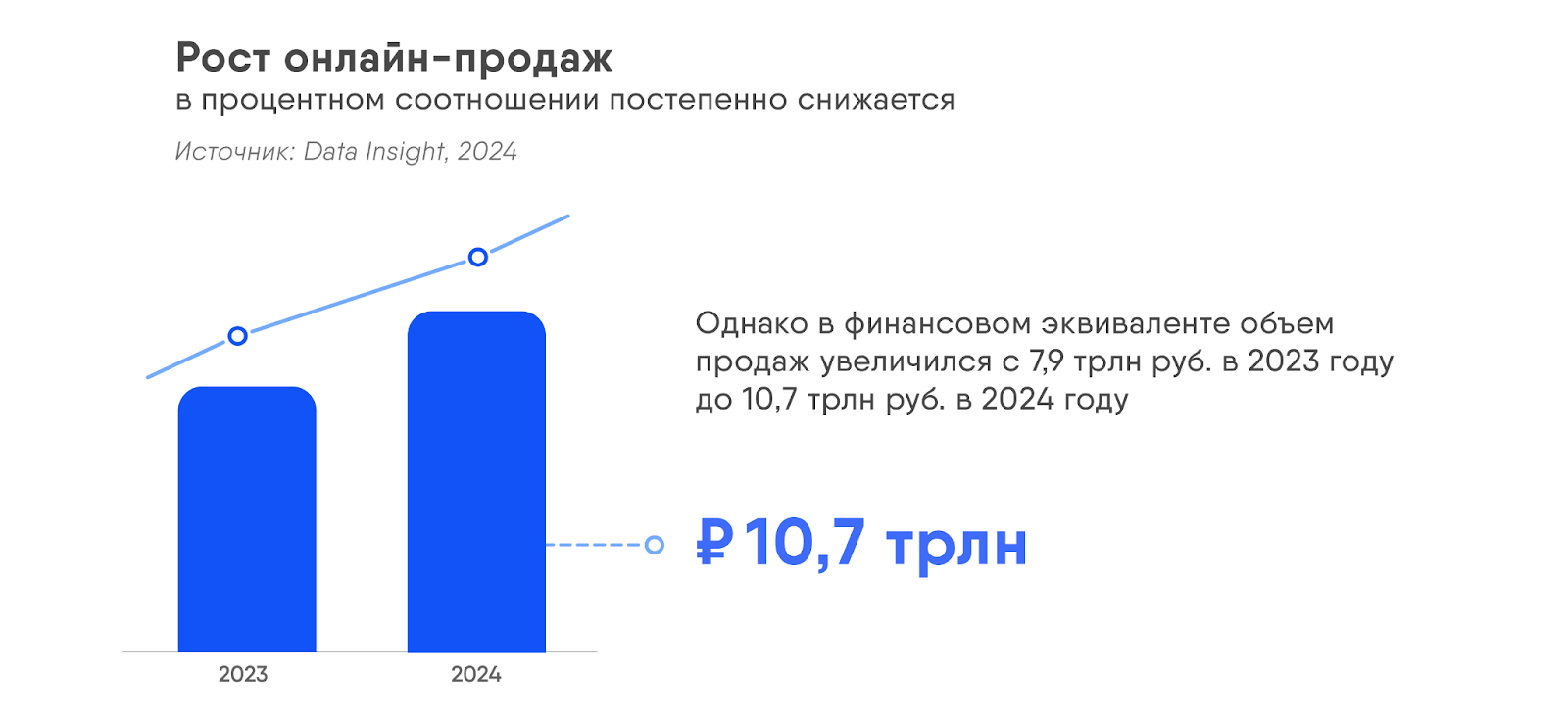
Analysts predict a slowdown in the growth rate of online sales. The peak occurred during the years of the pandemic, when there was an urgent need for e-commerce and a less competitive environment. Now the market is actively replenishing, so it is quite difficult to maintain the previous pace due to the migration of buyers from shrinking traditional trade. Plus, it is important to consider that more than 50% of Russians continue to visit offline stores.
Marketplaces and their impact on E-commerce
It will be up to the e-commerce giants to improve their sales figures.
Large marketplaces will support market growth, with their share increasing from 60.7% in 2023 to 75.3% in 2025, says business analyst Mikhail Burmistrov.
In Russia, the top five leaders in sales (according to data Data Insight for 2023-2024):
-
Wildberries – 2,143,700 million rubles
-
OZON – 1,566,400 million rubles
-
Yandex Market – 370,600 million rubles
-
MegaMarket – 312,700 million rubles
-
DNS online store – 239,400 million rubles
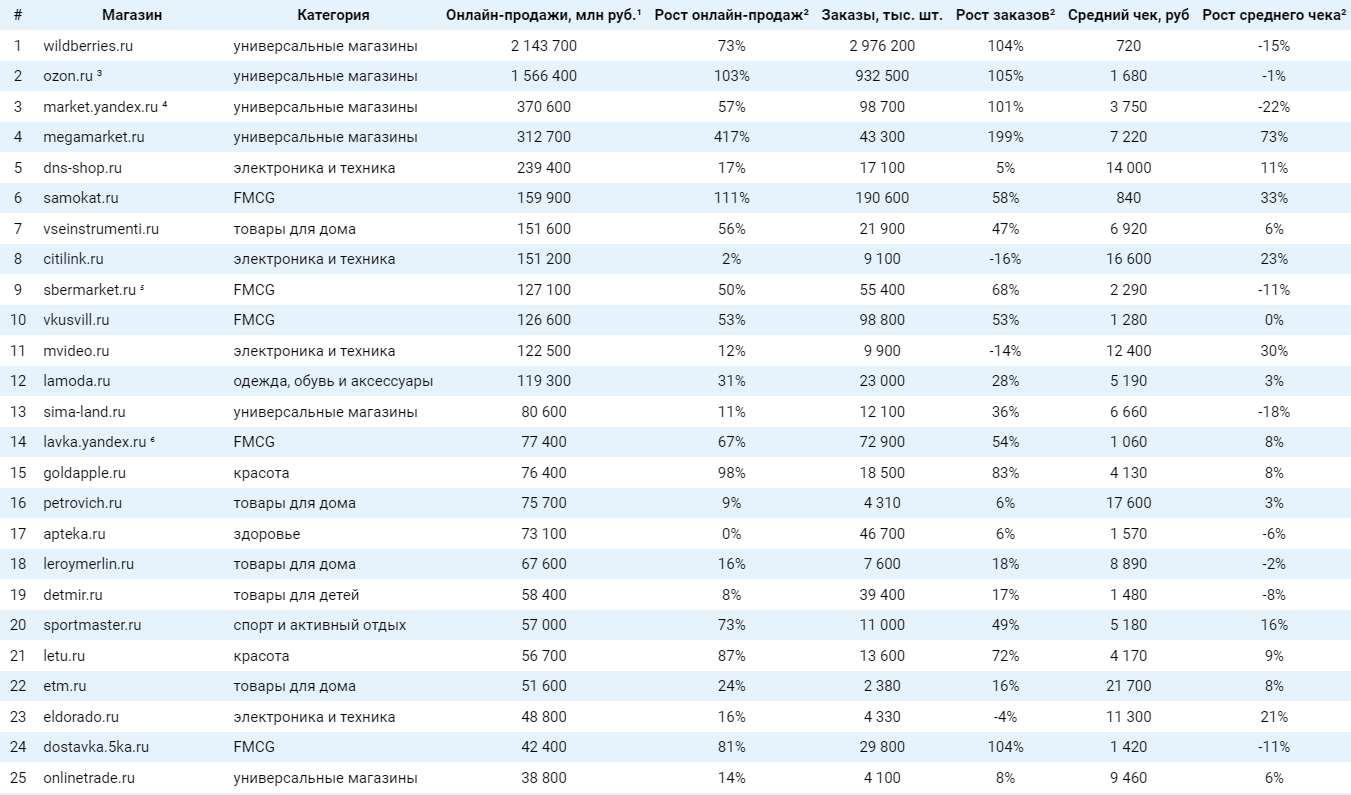
Source: rating Data Insight
As for the global market, Amazon holds the leading position in terms of both traffic and turnover – 37.6% of all sales and 2.8 billion views per year. It is followed by Walmart with 6.4% of sales, Apple with 3.6% of sales and eBay with 3% of sales.
AliExpress, which is available to us, occupies an honorable second place in terms of traffic – 952 million views.
And this is quite significant, since 52% of buyers in the world make purchases abroad (according to data Statesman). Thus, having international shipping can be a real way to increase sales.
For the Russian market, delivery across the country remains relevant. Buyers prefer to order goods on local marketplaces and receive them within 1-3 days, rather than place a similar order on AliExpress and wait a month.
Read on the topic: Global e-com trends to watch in 2025
What could go wrong? Statistics on consumer behavior
As we have already found out, the number of users of online stores both in Russia and in the world is actively growing.
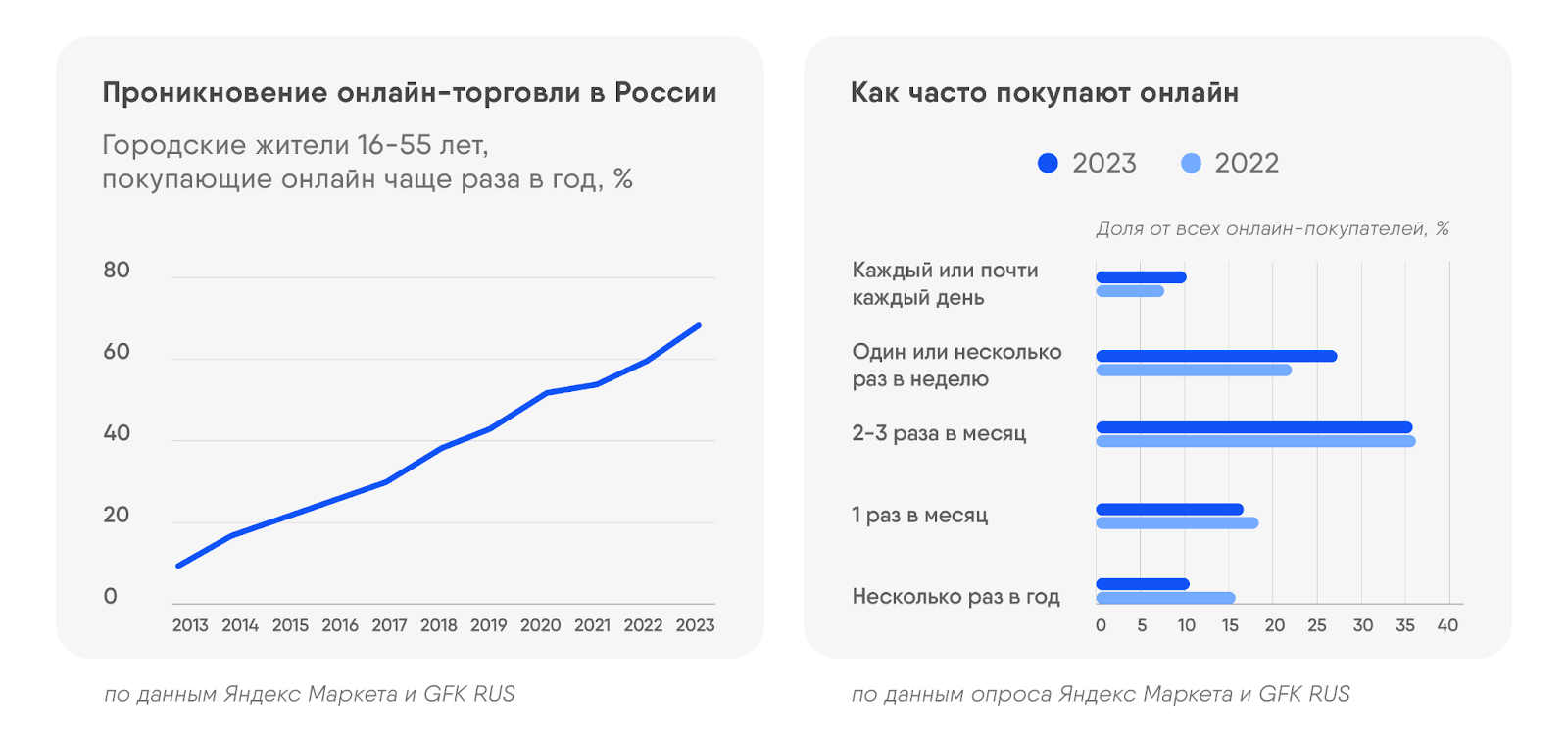
However, more than 70% of shoppers worldwide abandon their shopping cart (according to Statesman)
And the reason for this was:
-
Shipping cost
-
Create an account
-
Availability of service fee
-
Slow delivery times
-
Lack of trust in the site regarding privacy
-
Long/complicated ordering process
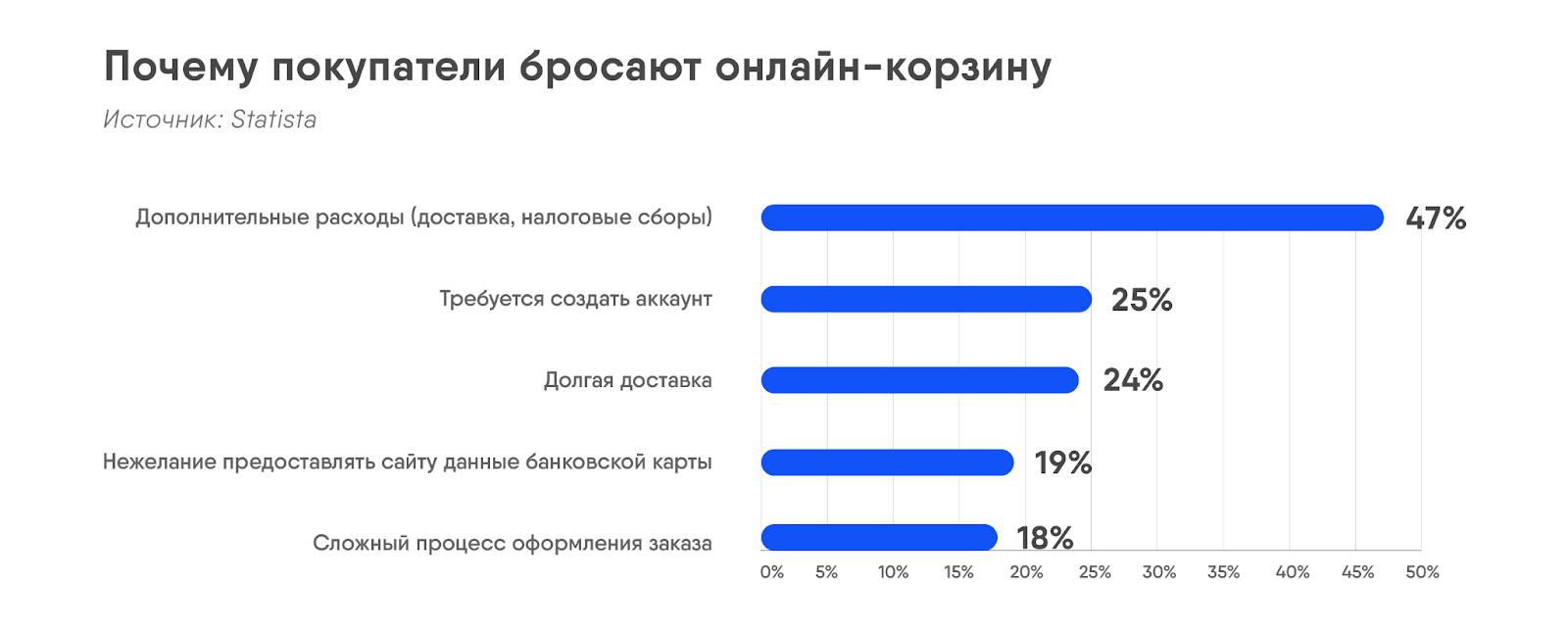
To avoid losing customers, you need to consider the following points:
-
Free registration on the site, i.e. the buyer can place an order without creating an account
-
Optimization of the delivery process and reduction of its cost
-
Using email newsletters as a marketing tool to encourage action
-
Adding a promo code input field to the cart
I would like to highlight the last point separately, since now the presence of advantageous offers in e-commerce has a particularly positive effect on sales.
For example, over the past 5 years, the dynamics of the user request “promo code” according to data Google Trends has doubled in size.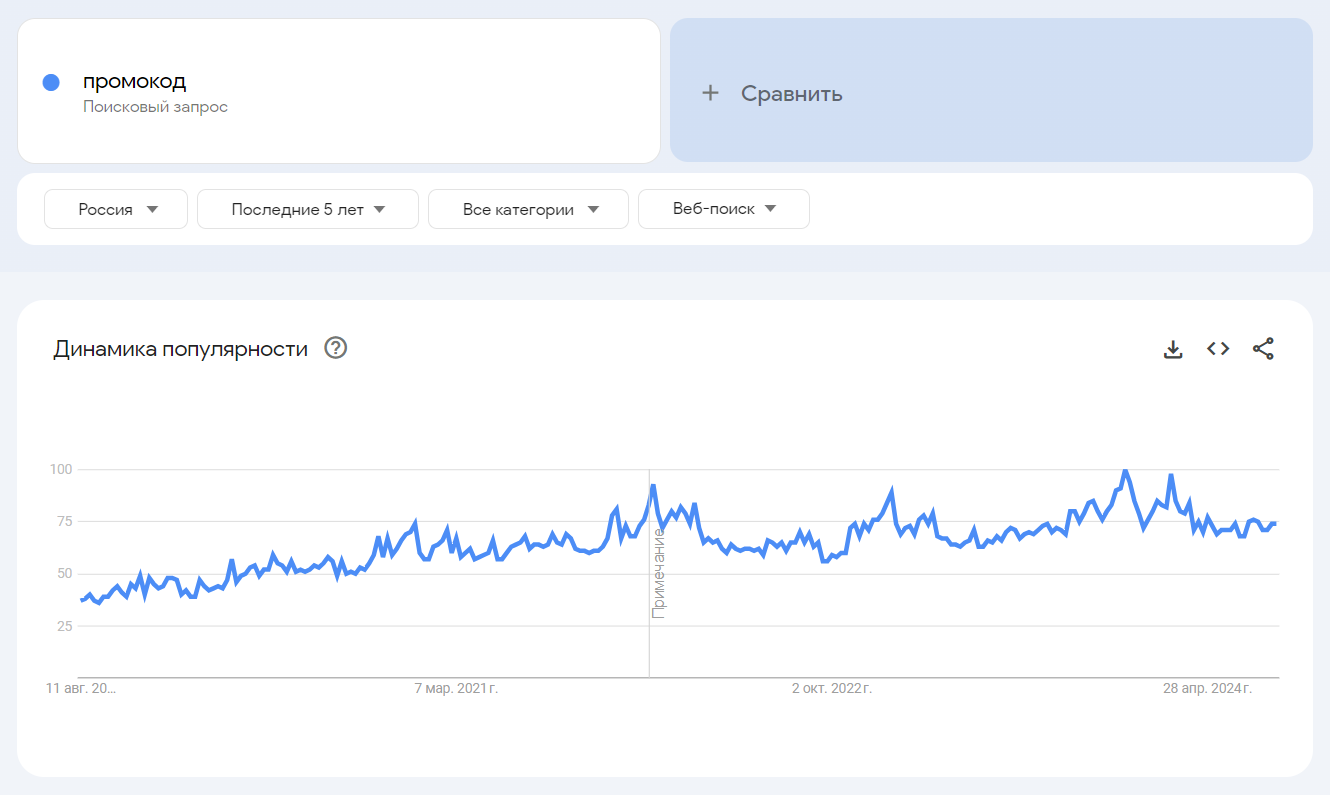
Source: Google Trends search query
Positive growth is also observed among the promo code sites themselves (data from Yandex.Metrica).

Source: data from Yandex.Metrica for promokodus.com
But this is just one example out of a dozen options for advantageous offers. The most promising for Russian buyers turned out to be free delivery.
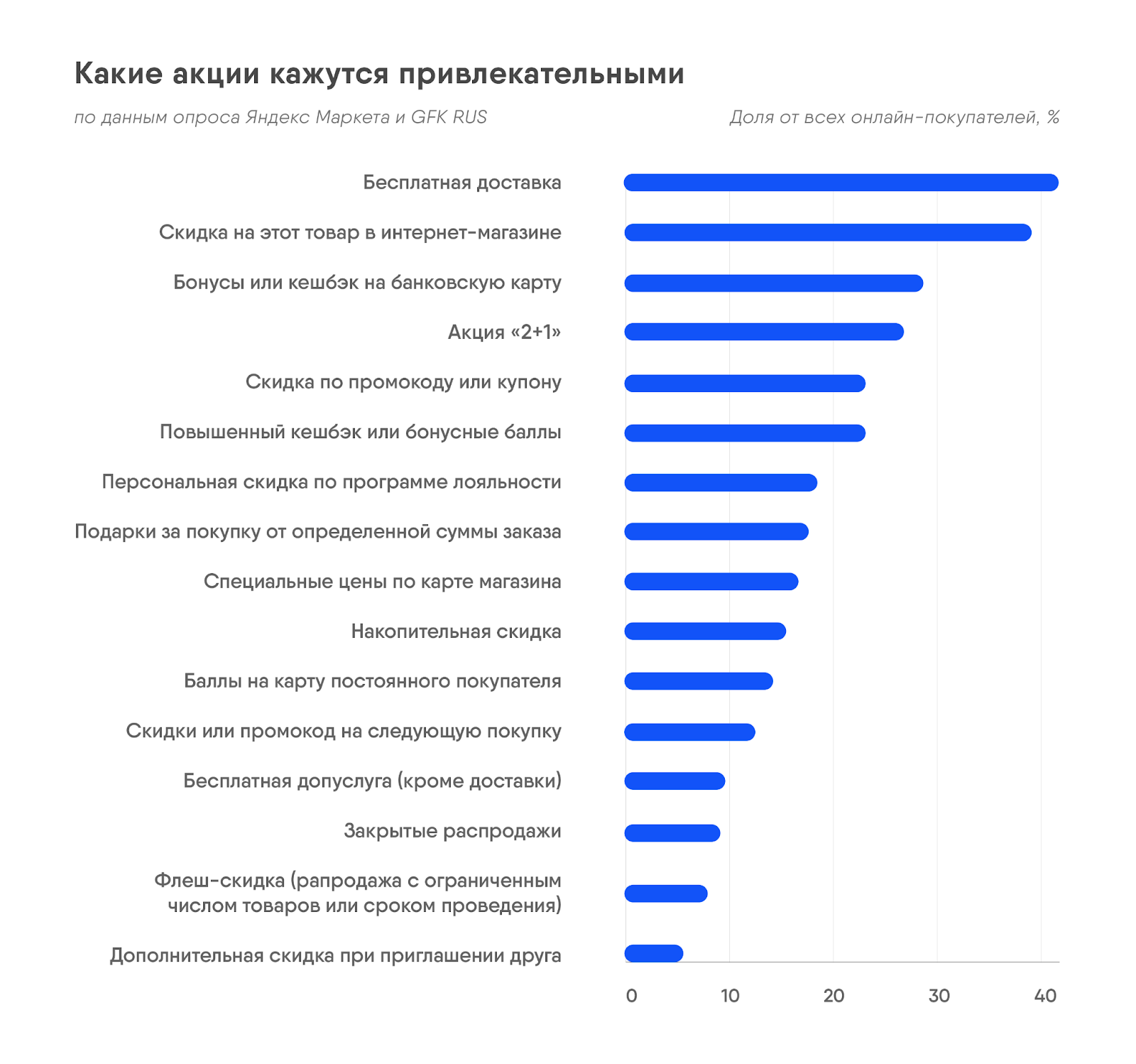
Another tool for successful development of e-commerce is working with social networks.
Read on the topic: 67% of Russian eCommerce companies use generative AI in their work
Demand for social commerce
Every year the Internet is increasingly drawing users into its web. More than 103 million Russians over 12 years old go online at least once a month (according to Mediascope data for 2024).
The global figure is 5.44 billion, of which 2.71 billion (almost 50%) users make purchases online. In Russia, this figure is 49.66 million, which is 48% of the total number of Russian users (data for 2023).
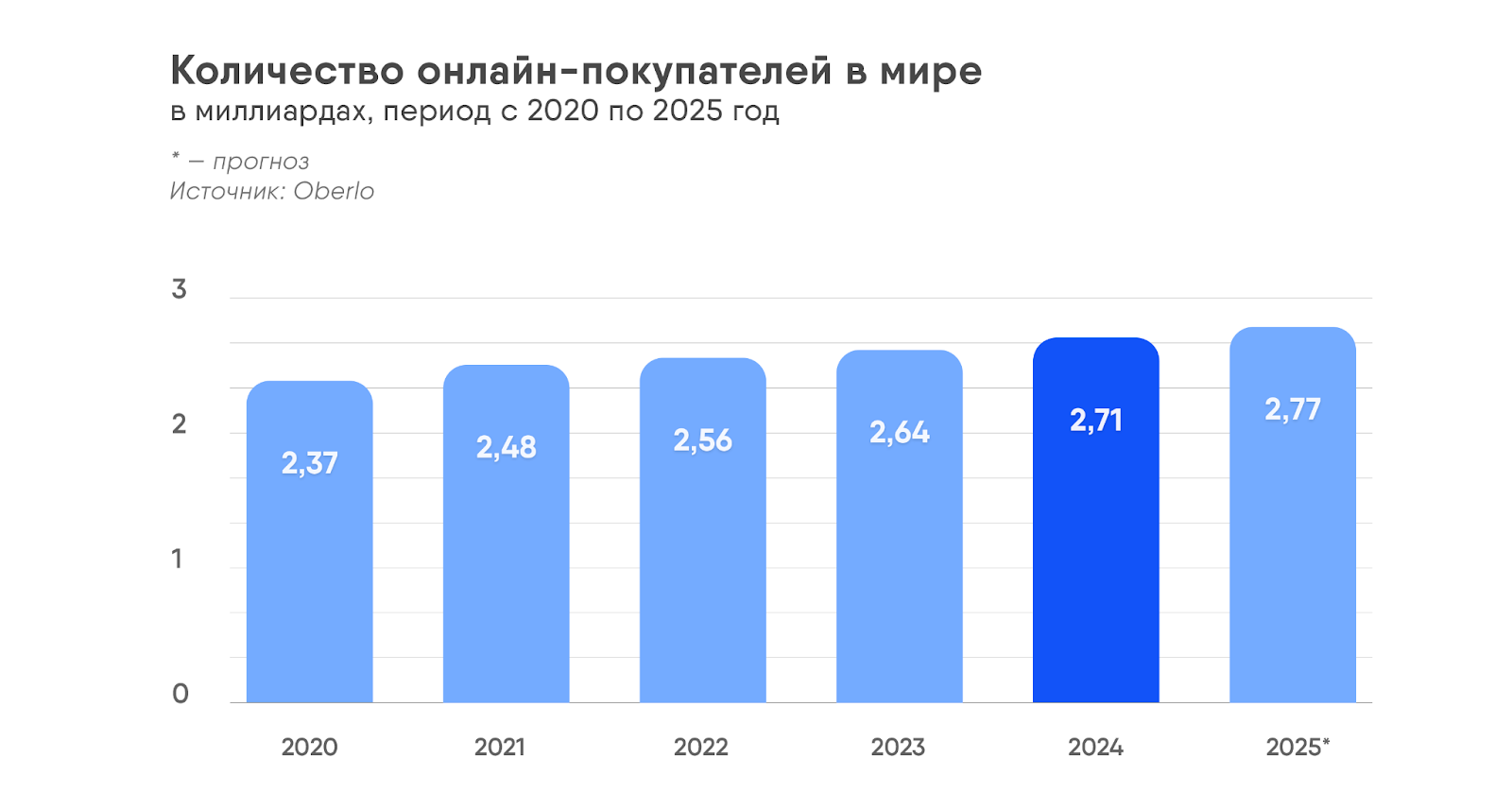
Considering the fact that by the end of 2023, the Russian influencer marketing market has grown by a third (data from a WildJam study, which cites Adindex), then we can conclude that the volume of sales in social networks is growing.
This is also confirmed by research from Statesman: “Social media commerce is expected to reach $8.5 trillion by 2030.”
Collaboration with bloggers and marketing strategies have a positive effect on this indicator, despite limited access to some platforms.
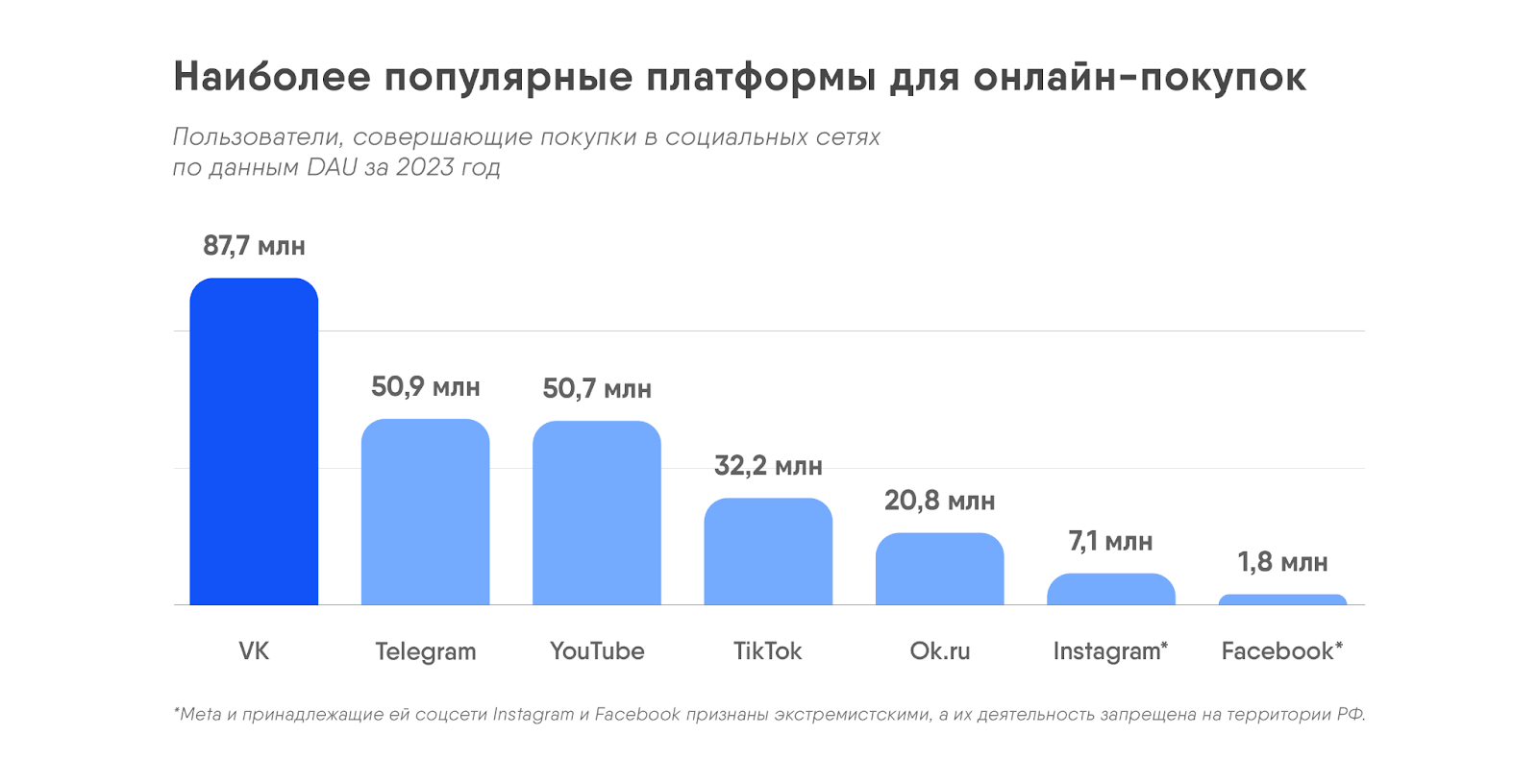
Who would have thought that the same store on the couch would be reborn and take over the world market?
The Future of E-Commerce
The power of online sales is great. Digitalization continues to gain momentum, penetrating into the lives of everyone. Already, 91% of users depend on their phone, using it for shopping (according to PewResearch). Will this figure grow to 100%? Time will tell. And the evolution that we can already observe in e-commerce.
AR technologies have become a new round of development of e-commerce. Analysts predict global economic growth – by $1.5 trillion by 2030 due to the capabilities of AR and VR (data consulting company PwC).
The Russian market is lagging behind the global market by only a year and a half, but we can already see the active implementation of augmented reality in online sales. For example, virtual fitting of clothes from Lamoda. An excellent opportunity to address the pain points of buyers and push them to action.
As a result, the e-commerce market in Russia has a promising future. Over the past year, the Internet’s contribution to the country’s economy has grown by 35% to 16.4 trillion rubles. According to RAEC Director Sergei Grebennikov, 94% of this amount was accounted for by e-commerce. With the natural change of generations, this percentage and online sales will only grow.
Read on the topic: E-grocery services in Russia increased revenue by 34.6%
Cover photo: Unsplash
Source: rb.ru


